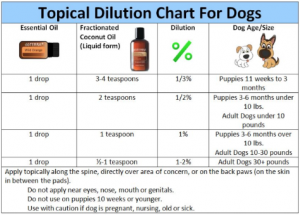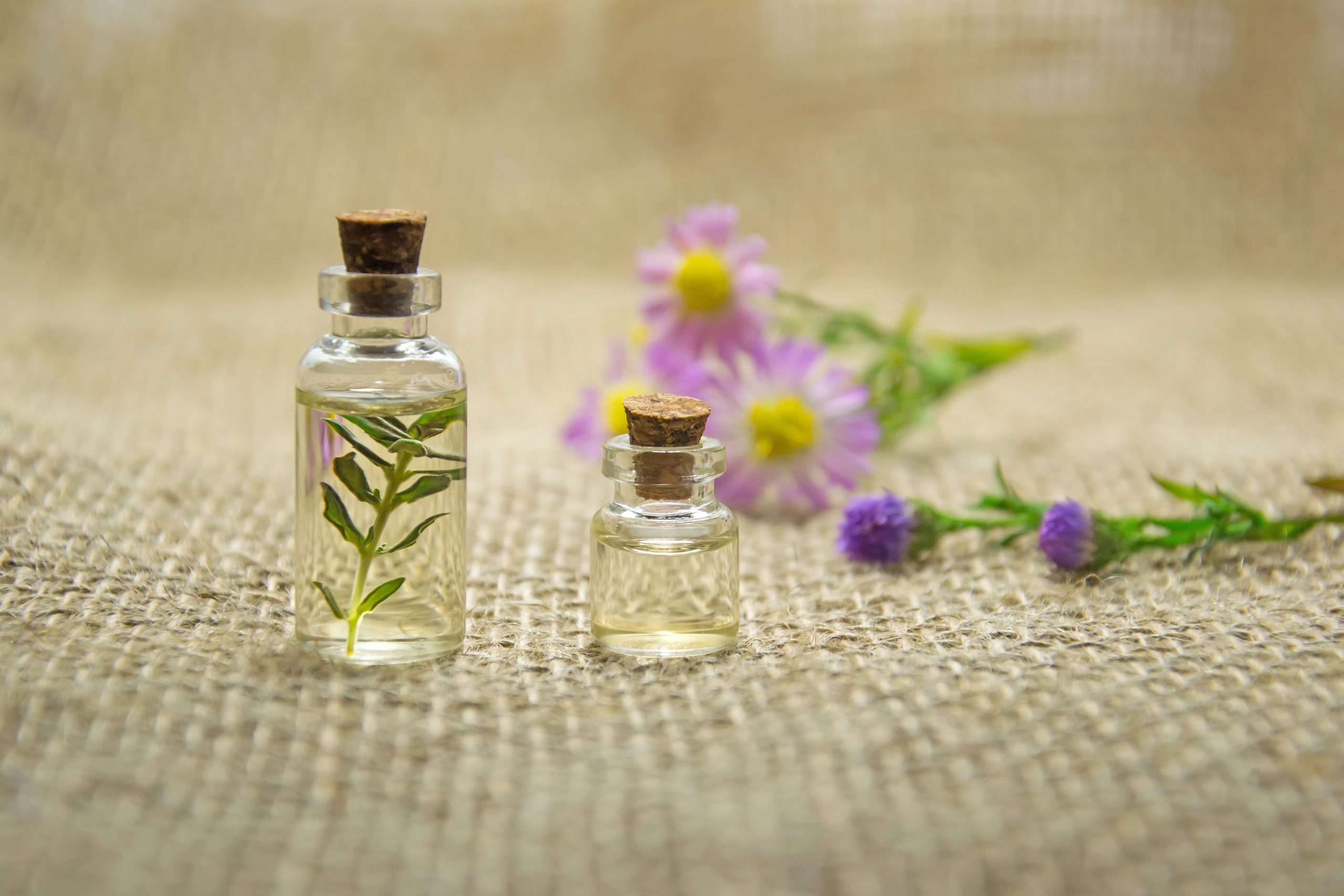Follow your nose for tips from Certified Animal Aromatherapist, Stacey Ferrell, on how to use essential oils safely with your pets.
From paper to clothing, nourishment to medicinal herbs, even the oxygen we breathe – we couldn’t exist without plants. But there are other lesser-known health benefits that plants offer us and our beloved pets through essential oils.
What are essential oils?
Essential oils are extracted from seeds, bark, roots, stems, flowers, and other parts of plants. These oils are particularly potent – just one drop of essential oil is equivalent to several teaspoons of the same plant in dried herb form. One drop of peppermint essential oil, for example, is equal to more than 25 cups of peppermint tea.
Why should I use essential oils with my pets?
Research indicates that essential oils have a positive effect on many health conditions, including infection, pain, anxiety, depression, and nausea. Our pets experience many of these conditions and can benefit physically and emotionally from aromatherapy. Pet parents worried about using chemically produced, synthetic substances on their pets can rest assured – these oils are all natural!
That being said, a couple notes of caution:
- Not all oils are created equal. Be sure that you are using a therapeutic grade, high-quality oil that is made from organic plants and contains no artificial colors, fillers, pesticides, toxins, or preservatives.
- When you use essential oils with your pets, less is more. Animals are generally more sensitive and their bodies don’t process things the same way that we do. The normal dosage for a human is far too potent for an animal.
There are 3 different ways to use essential oils with your pets: aromatically, topically, or ingested.
1. Aromatic Use
Inhaling essential oils can open your pet’s airways and largely affect their mood. Molecules from the essential oil enter your pet’s body through their nose. In just over 20 seconds, the oils begin interacting with your pet’s brain. They affect both the Central Nervous System (the thinking portion) as well as the Limbic System (the emotional part) by helping to reduce their heart rate, body temperature, and adrenaline. The oils also enter the lungs and respiratory system. You can diffuse the oils by applying a few drops to a diffuser at home (total of 3 drops for cats or 4 drops for dogs). For anxious travelers or nauseous car riders, apply 1 drop to a cotton ball or car diffuser and place it in the air vents. You can also mix oils in a spray bottle with water and mist them over furniture, carpet, linens, or pet beds.
2. Topical Application
The benefits of applying oils topically include: pain relief, immediate comfort, and improved immune support. However, you should avoid applying oil near the eyes, nose, inner ears, genital area, and open sores/cuts. Animals also vary greatly in size, therefore you will need to dilute the oil with a carrier oil like fractionated coconut oil before applying. Special caution and extra dilution is important for babies, smaller breeds, pregnant females, older pets, or animals with other sensitivities. Additional topical treatments include adding a few drops to a warm bath or making a hot/cold compress. To do this, you can soak a towel or cloth in water, add essential oils, and then apply it to the desired area.
3. Ingestion
Essential oils can help benefit your pet’s mouth, throat, internal organs, and digestive system. They enter the bloodstream directly, where they are transported throughout the rest of the body. Remember, the oils are 50-70 times more potent than herbs, so one drop goes a long way. Before using this method, be sure to research and know the brand of oil you are using. It is crucial that the oil is safe for ingestion. Some effective methods of internal application include adding essential oils to your pet’s water or food.
Remember: essential oils begin working quickly (in as little as 20 seconds post-application). Even if an oil is safe, like lavender, all animals are different and can have a negative/allergic reaction. After applying essential oils to your pet, monitor them closely and look out for the following: excessive scratching or biting at the application area, acting distressed, drooling, panting, or whining. If you notice any of these symptoms, stop using the oil immediately. In the event that your pet experiences a topical reaction, quickly apply additional plain carrier oil to the area. For any further questions or concerns, or if the symptoms do not stop or diminish after an hour, contact your vet immediately.
NOTE: I’m not suggesting that you should replace medicine that has been prescribed by a vet with essential oils or stop veterinary care all together. I believe in vets and the work that they do. I also believe essential oils can be added in conjunction with other treatments to help our pets.
Important notes about using essential oils with pets:
- Cats metabolize oils differently. I recommend that you use the smallest amount of essential oil in a diluted form. For cats specifically, avoid citrus oils, fir oils, hot oils (cassia, oregano, cinnamon and clove), mint oils (peppermint or spearmint), pine, spruce, birch, wintergreen, tea tree, nutmeg, thyme, basil, blue tansy, cypress, fennel, rosemary, and tarragon.
- Oils that should be avoided with dogs include fir oils, hot oils, birch, wintergreen, pine, spruce, yarrow and tea tree.
- Even though horses are bigger than cats and dogs, they are still sensitive. Don’t use more than the recommended dosage for a human and always use less essential oil on pregnant mares, ponies, and minis.

About the Author
 Stacey Ferrell is an animal communicator, empath, intuitive healer, and certified aromatherapist. She lives in Prescott Valley, Arizona with her husband and son. Stacey earned a Bachelor of Science degree from CSU Sacramento and has had many animals in her life, including dogs, cats, bunnies, guinea pigs, chinchillas, snakes, lizards, and horses. She has been communicating with animals for 16 years and doing energy healing work for over 13 years. To learn more about the work Stacey does, visit her website.
Stacey Ferrell is an animal communicator, empath, intuitive healer, and certified aromatherapist. She lives in Prescott Valley, Arizona with her husband and son. Stacey earned a Bachelor of Science degree from CSU Sacramento and has had many animals in her life, including dogs, cats, bunnies, guinea pigs, chinchillas, snakes, lizards, and horses. She has been communicating with animals for 16 years and doing energy healing work for over 13 years. To learn more about the work Stacey does, visit her website.



